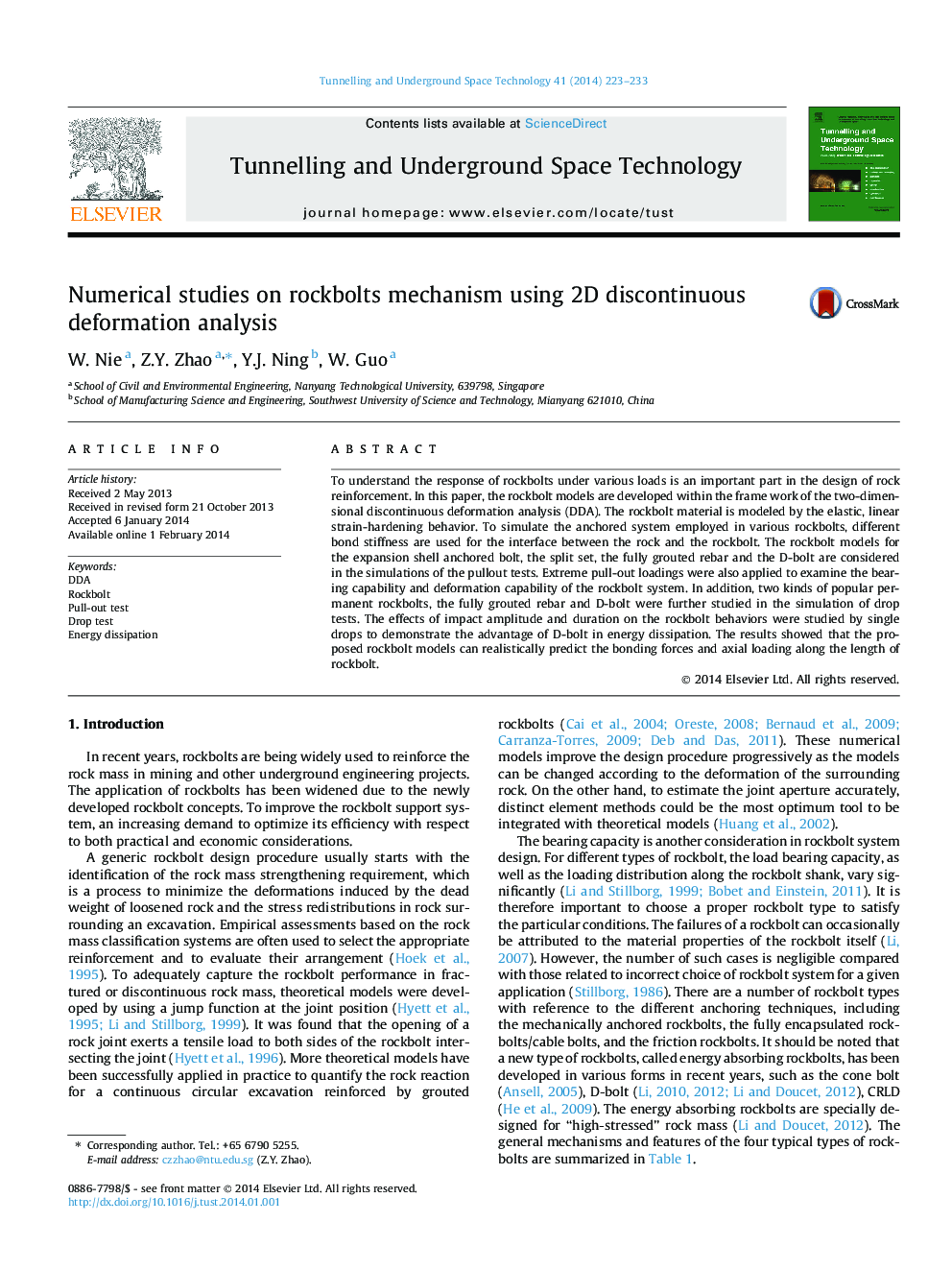| Article ID | Journal | Published Year | Pages | File Type |
|---|---|---|---|---|
| 312390 | Tunnelling and Underground Space Technology | 2014 | 11 Pages |
•A rockbolt model is developed within the frame work of the two-dimensional discontinuous deformation analysis (DDA).•The mechanism of a rockbolt relies on the anchored system and the bolt material adopted.•The proposed rockbolt models can predict the bonding forces and axial loads along the length of different kinds of rockbolt.•The D-bolt model shows its advantages in energy dissipation under dynamic loading conditions.
To understand the response of rockbolts under various loads is an important part in the design of rock reinforcement. In this paper, the rockbolt models are developed within the frame work of the two-dimensional discontinuous deformation analysis (DDA). The rockbolt material is modeled by the elastic, linear strain-hardening behavior. To simulate the anchored system employed in various rockbolts, different bond stiffness are used for the interface between the rock and the rockbolt. The rockbolt models for the expansion shell anchored bolt, the split set, the fully grouted rebar and the D-bolt are considered in the simulations of the pullout tests. Extreme pull-out loadings were also applied to examine the bearing capability and deformation capability of the rockbolt system. In addition, two kinds of popular permanent rockbolts, the fully grouted rebar and D-bolt were further studied in the simulation of drop tests. The effects of impact amplitude and duration on the rockbolt behaviors were studied by single drops to demonstrate the advantage of D-bolt in energy dissipation. The results showed that the proposed rockbolt models can realistically predict the bonding forces and axial loading along the length of rockbolt.
